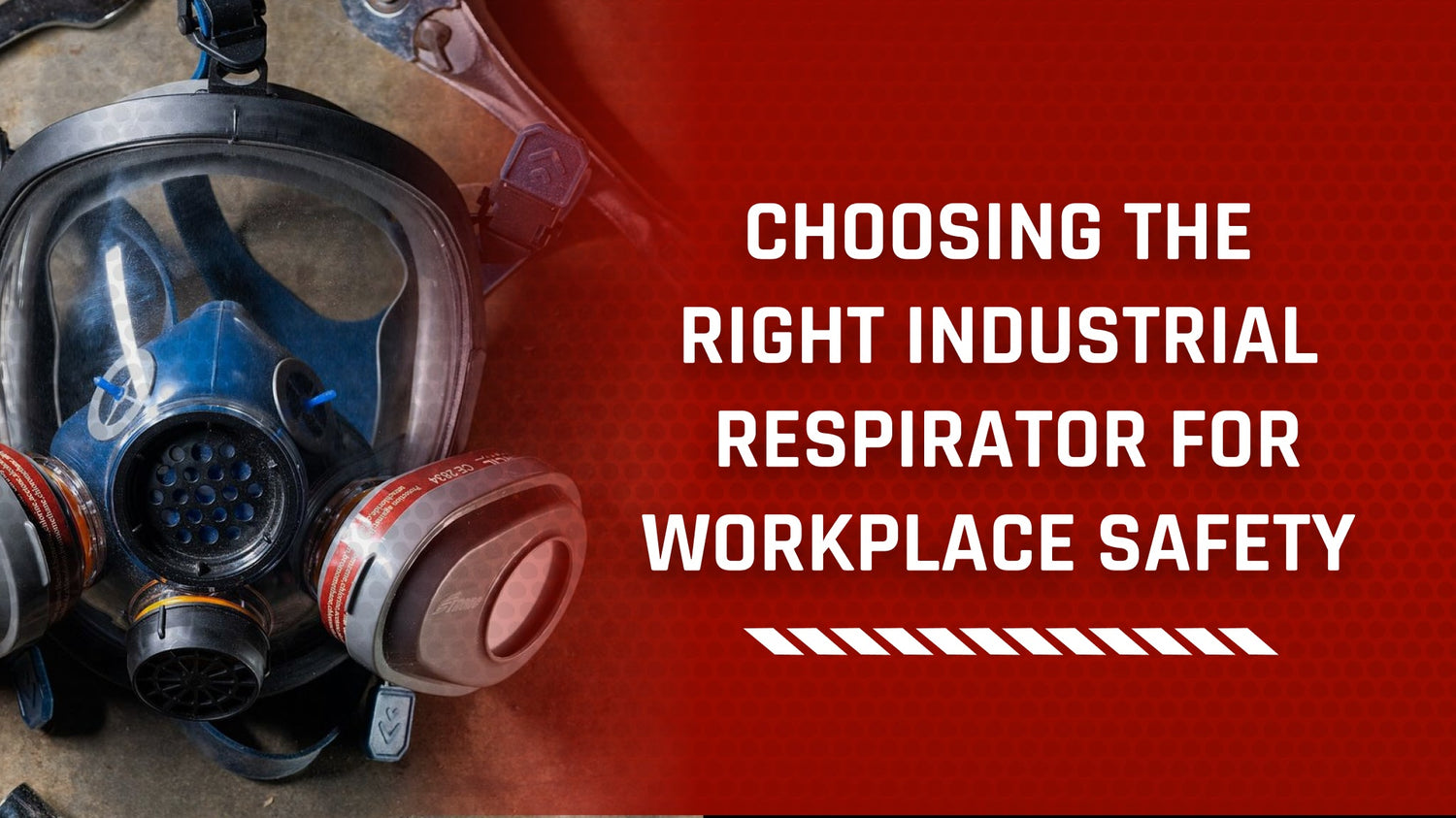In the dynamic landscape of industrial workplaces, selecting the appropriate respiratory protection is paramount to ensuring the health and safety of workers. Millions of U.S. workers show up to do their jobs each day knowing they’ll face harsh, inhospitable and even hazardous conditions. For these workers, being equipped with the appropriate PPE is imperative.The process involves considering various factors, conducting thorough assessments, and learning from real-world examples to avoid the consequences of choosing the wrong respirator.
Read about what Occupational Health and Safety has to say about Choosing the Right Respirator for Workplace Safety (https://ohsonline.com/Articles/2022/10/01/Choosing-the-Right.aspx)
Factors Influencing Respirator Selection
1. Environmental Hazards:
Identify the specific hazards present in the workplace, such as particulates, gases, vapors, or a combination of these. Respirators are designed to address different types of airborne contaminants, and choosing the right one hinges on a clear understanding of the environment.
2. Duration of Use:
Evaluate the duration for which the respirator will be worn. For short-term tasks, disposable respirators like N95 masks might suffice, while prolonged exposure may necessitate reusable respirators or powered air-purifying respirators (PAPRs) with enhanced comfort features.
3. Comfort and Fit:
Workers are more likely to adhere to safety protocols if the respirator is comfortable to wear. Consider factors such as facial fit, straps, and weight. Fit testing is crucial to ensure an airtight seal, minimizing the risk of contaminants entering.
4. User-Specific Considerations:
Recognize individual differences among workers, including pre-existing health conditions and facial features that might affect respirator fit. Provide options for different face sizes and shapes to accommodate diverse workforce needs.
Check out Parcil Safety's catalogue of Industrial Safety Equipment

Consequences of Choosing the Wrong Respirator: Case Studies and Expert Insights
Case Study 1: Inadequate Protection Against Toxic Vapors
An OSHA-investigated incident highlights where an employee losing consciousness due to inadequate safety precautions. The circumstances necessitated the use of a full-face respirator, yet the employee was wearing a half-face respirator. For a detailed account of this incident,
Please refer to the full incident report HERE.
Case Study 2: The Bhopal Disaster and its Aftermath
On December 3 1984, more than 40 tons of methyl isocyanate gas leaked from a pesticide plant in Bhopal, India, immediately killing at least 3,800 people and causing significant morbidity and premature death for many thousands more.
Please refer to the full incident report HERE
Expert Interview:
We talked to two industry experts, Brian Dailey (Global Emergency Response Leader and National Pro Board Certified Hazardous Materials Technician, The Chemours Company) and Vic McMurray (Responsible Care Director, Olin Corporation), to learn more about common misconceptions regarding respirator safety from their extensive knowledge and firsthand experience in the field. Combined, Brian and Vic have more than 64 years of experience in the chemical industry. In this interview, they share several important insights about respirator safety that are sometimes overlooked.
To read full interview, click HERE
Conducting Workplace Assessments for Appropriate Respirator Selection
1. Identify Hazards:
Conduct a comprehensive hazard analysis to identify airborne contaminants present in the workplace. Consider both particulate and gas/vapor hazards.
2. Understand Exposure Levels:
Determine the concentration and duration of exposure to different contaminants. This information is critical in selecting respirators with the appropriate protection factor.
3. Assess Work Tasks:
Evaluate the nature of work tasks, including any aerosol-generating procedures or activities that might impact respiratory protection requirements.
4. Involve Workers:
Engage workers in the selection process. Gather input regarding comfort, previous experiences, and any challenges faced with existing respiratory protection.
5. Conduct Fit Testing:
Fit testing is non-negotiable. Regular fit testing ensures that respirators form a proper seal on individual faces, optimizing their effectiveness.
6. Review and Update:
Periodically review and update the respiratory protection program based on changes in workplace conditions, tasks, or the introduction of new hazards.
Check out Complete Guide to Industrial Safety by Parcil Safety.
Conclusion:
Choosing the right industrial respirator for workplace safety is a multifaceted process that demands careful consideration of environmental hazards, duration of use, comfort, and user-specific factors. Real-world examples and expert insights underscore the consequences of making the wrong choice. Conducting thorough workplace assessments ensures that the selected respirator aligns with the specific needs and challenges of the working environment. By prioritizing proper selection and fit, organizations can create a safer, healthier, and more productive workplace for their employees.





















Leave a comment
All comments are moderated before being published.
This site is protected by hCaptcha and the hCaptcha Privacy Policy and Terms of Service apply.